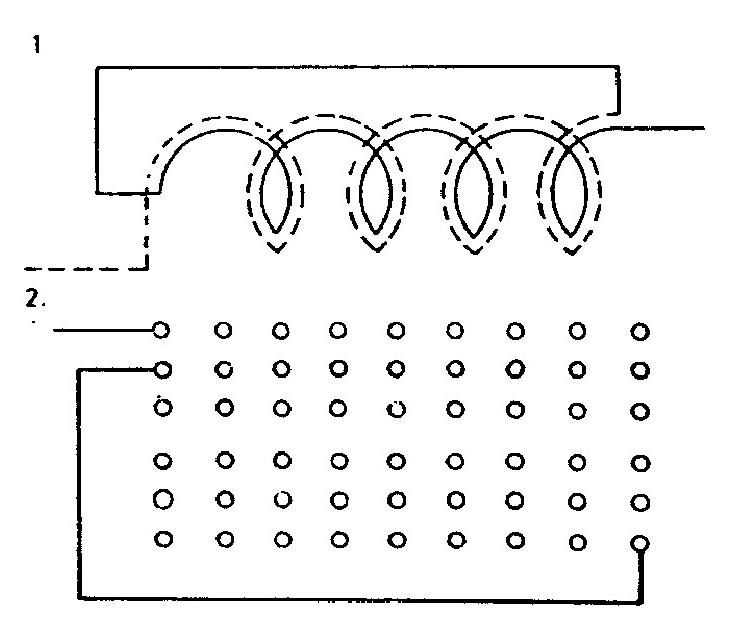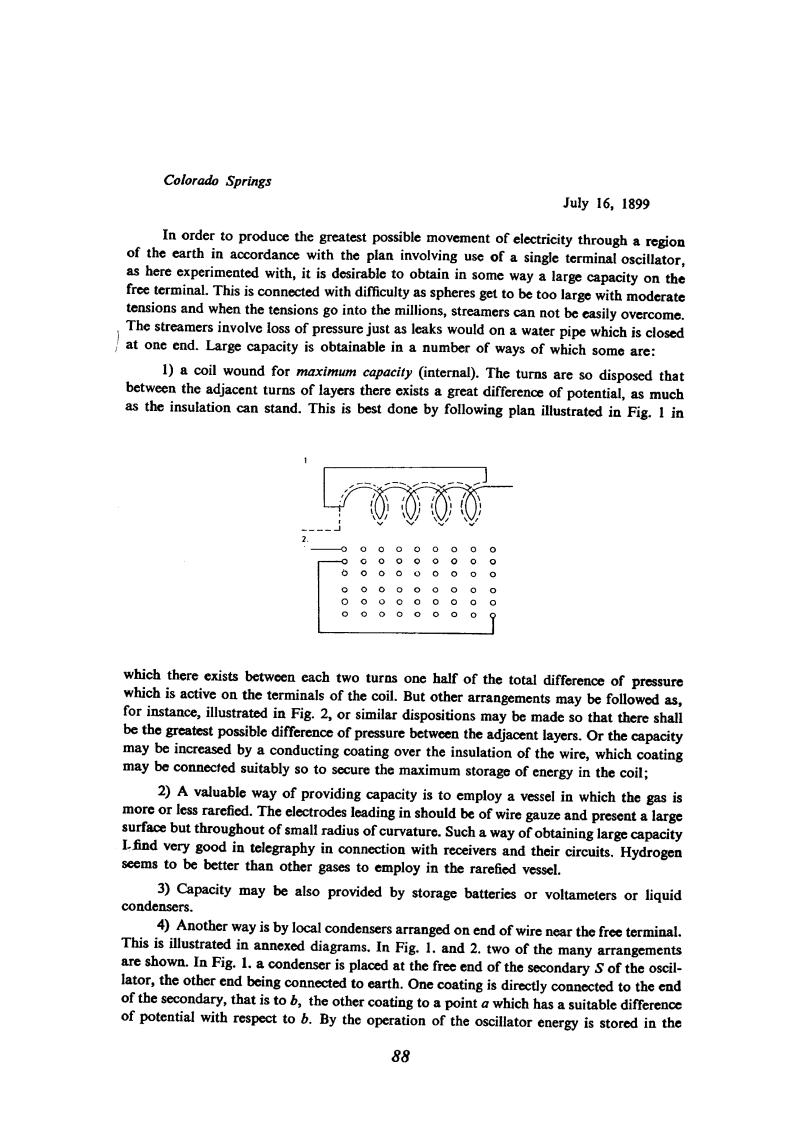
Nikola Tesla Books
Colorado Springs
July 16, 1899
In order to produce the greatest possible movement of electricity through a region of the earth in accordance with the plan involving use of a single terminal oscillator, as here experimented with, it is desirable to obtain in some way a large capacity on the free terminal. This is connected with difficulty as spheres get to be too large with moderate tensions and when the tensions go into the millions, streamers can not be easily overcome. The streamers involve loss of pressure just as leaks would on a water pipe which is closed at one end. Large capacity is obtainable in a number of ways of which some are:
- a coil wound for maximum capacity (internal). The turns are so disposed that between the adjacent turns of layers there exists a great difference of potential, as much as the insulation can stand. This is best done by following plan illustrated in Fig. 1 in which there exists between each two turns one half of the total difference of pressure which is active on the terminals of the coil.
But other arrangements may be followed as, for instance, illustrated in Fig. 2, or similar dispositions may be made so that there shall be the greatest possible difference of pressure between the adjacent layers. Or the capacity may be increased by a conducting coating over the insulation of the wire, which coating may be connected suitably so to secure the maximum storage of energy in the coil; - A valuable way of providing capacity is to employ a vessel in which the gas is more or less rarefied. The electrodes leading in should be of wire gauze and present a large surface but throughout of small radius of curvature. Such a way of obtaining large capacity I find very good in telegraphy in connection with receivers and their circuits. Hydrogen seems to be better than other gases to employ in the rarefied vessel.
- Capacity may be also provided by storage batteries or voltameters or liquid condensers.
- Another way is by local condensers arranged on end of wire near the free terminal. This is illustrated in annexed diagrams. In Fig. 1. and 2. two of the many arrangements are shown. In Fig. 1. a condenser is placed at the free end of the secondary S of the oscillator, the other end being connected to earth. One coating is directly connected to the end of the secondary, that is to b, the other coating to a point a which has a suitable difference of potential with respect to b. By the operation of the oscillator energy is stored in
88
July 16
In order to achieve the oscillator secondary resonant circuit at relatively low frequency, he looks for a method to achieve large capacitance, but not by means of a large sphere, because that would not be practical. As one possibility he foresees the use of a coil with large self-capacitance, wound by a special technique (therefore, completely opposite from the goal in his previous researches, when he was looking for a method to reduce the coil self-capacitance - e.g. July 9, 10), or by winding a conductive layer of insulation around the wire which will enable "maximum energy concentration" in the coil.
Another method is interesting as an idea, and the essence is that instead of a metal sphere he uses rare gas. The third method has not been sufficiently explained, and the fourth one is based on the use of high voltage capacitor which shunts one portion of the secondary coil.


